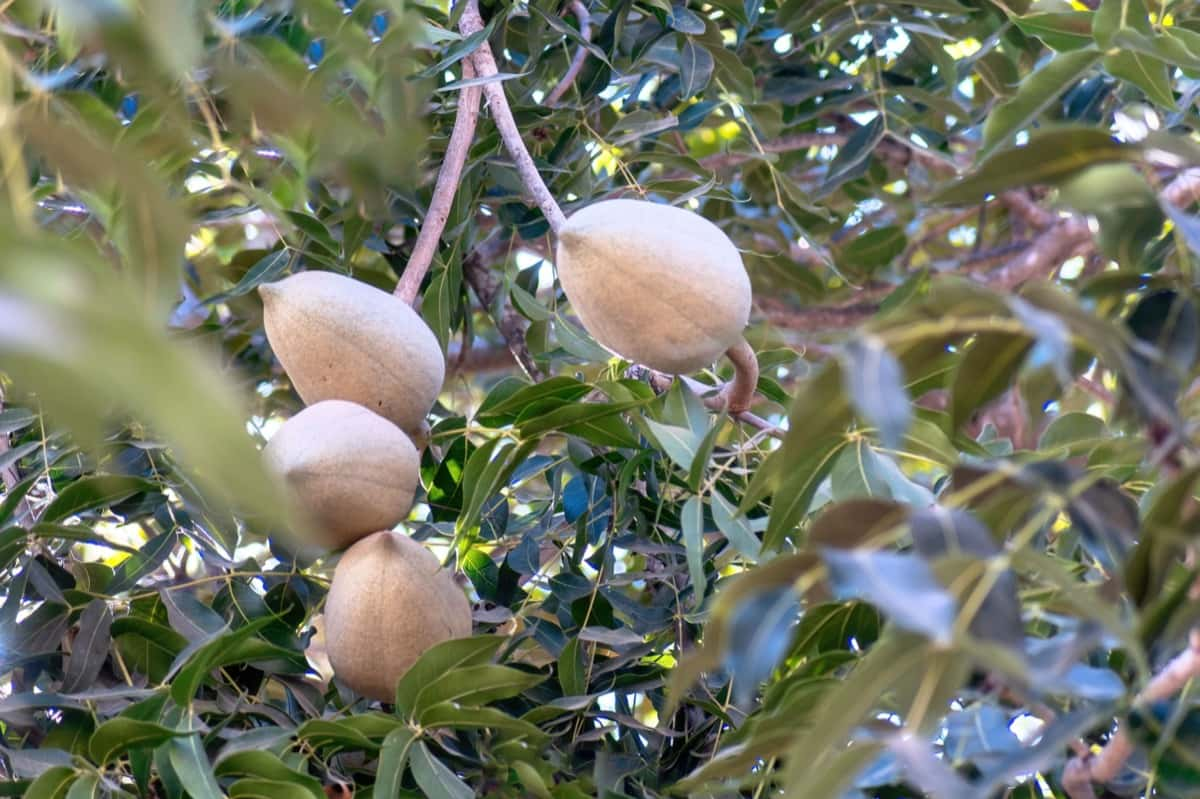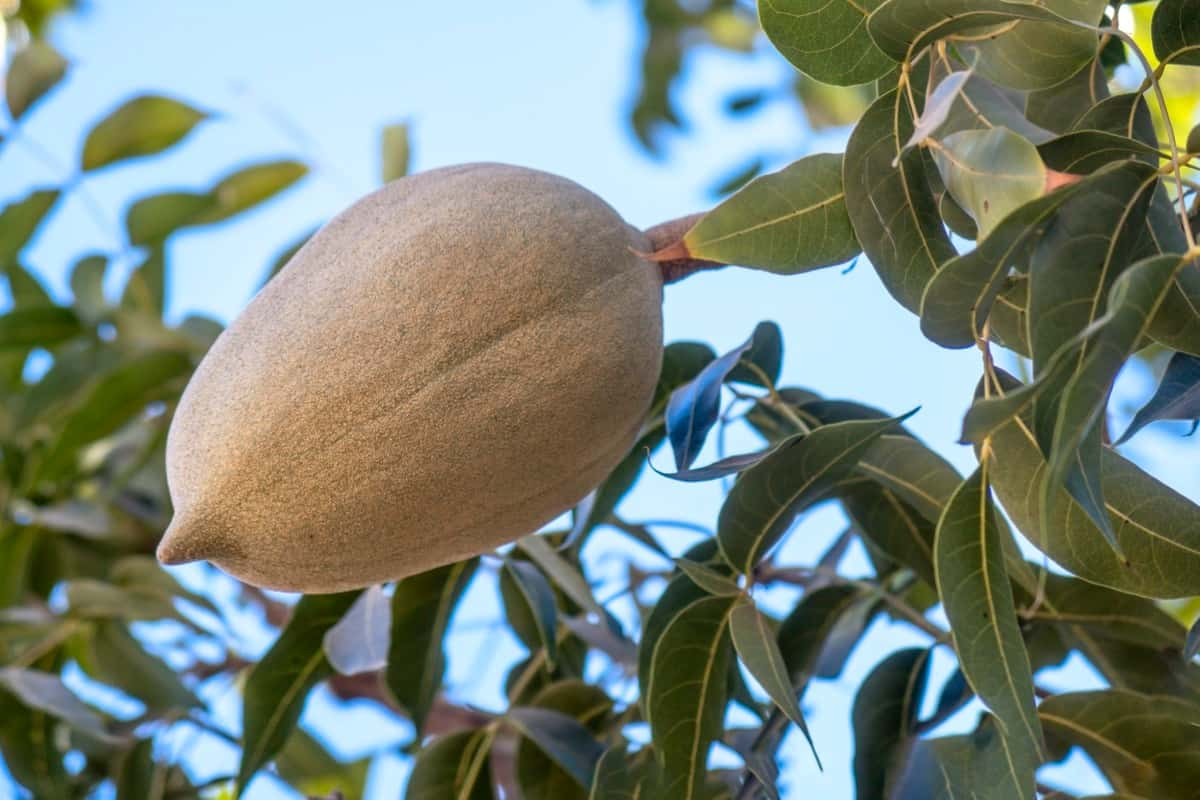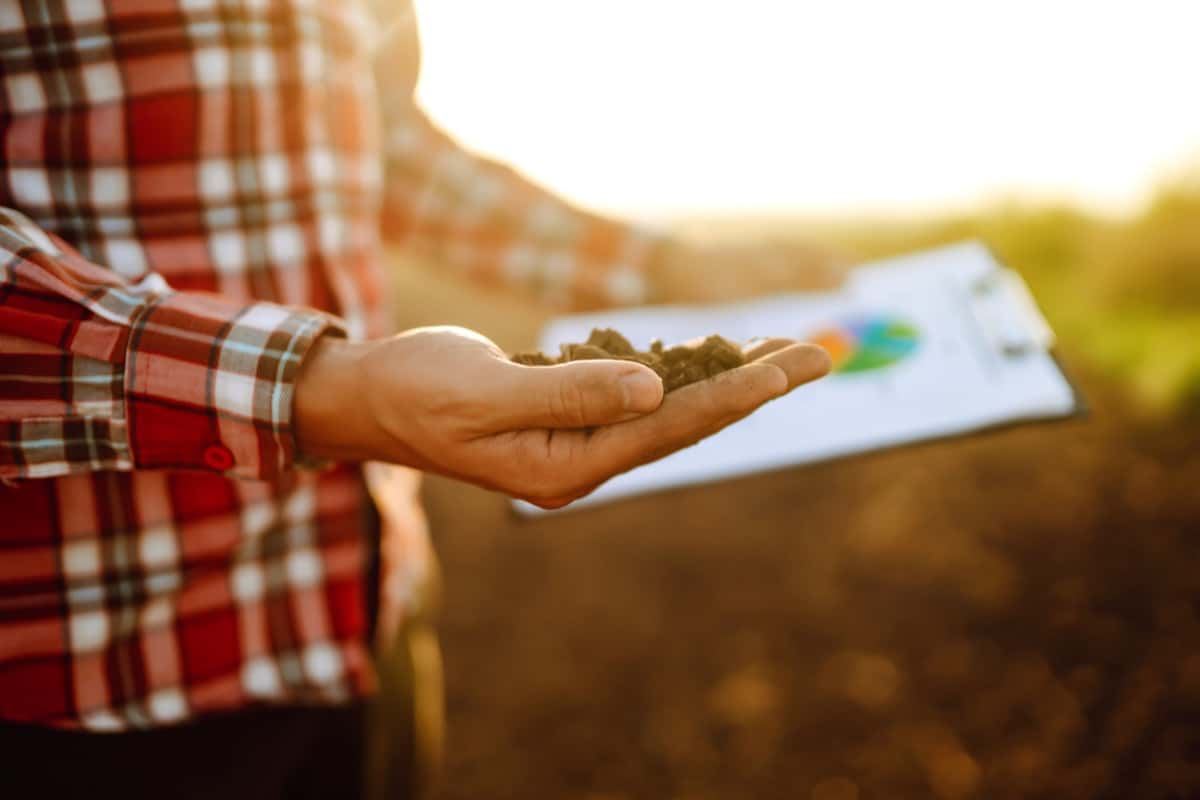Mahogany, also known as the “king of timbers,” is a highly sought-after wood species for its durability, strength, and beautiful red-brown color. In India, mahogany farming is a growing industry that provides farmers with a valuable source of income and helps preserve and protect the country’s natural forests. Planting mahogany trees helps protect crops from the damaging impacts of heavy rains and high winds.

Thus, growing Mahogany on fields can help minimize soil erosion and increase crop output. In this article, we’ll look at the history of mahogany farming in India, the industry’s challenges, and the potential benefits for farmers and the environment. Whether you’re a farmer looking to diversify your crops or a consumer interested in sustainable wood products, this is an informative and engaging read this will provide you with a deeper understanding of the mahogany farming industry in India.
Mahogany farming in India
About Mahogony tree and Mahogany farming
Swietenia macrophylla is the scientific name of Indian Mahogany. However, there are three species: Swietenia macrophylla, Swietenia mahogany, and Swietenia humilis. Mahogany is a tropical hardwood tree species highly valued for its durability, color, and unique grain pattern. It is commonly used in furniture, cabinetry, and high-end flooring. The tree is native to Central and South America and some Caribbean islands.
They require a warm, humid climate and well-drained soil to thrive. Mahogany farming is the practice of cultivating mahogany trees for commercial use. It is typically done by planting seedlings in a controlled environment, such as a nursery, before transplanting them to a plantation. Mahogany is a highly valued hardwood widely used in furniture, flooring, and decorative items.
It is known for its durability, strength, and beautiful dark color. Mahogany farming in India is an industry that is rapidly growing and has the potential to be a major source of income for farmers. It can be a sustainable and profitable endeavor. Still, it is also essential to ensure that the trees are grown responsibly and ethically, such as by not depleting the natural forest.
How long does it take to grow Mahogany trees?
Mahogany trees take about 20–30 years to mature. From planting to maturity, it takes around 20–30 years for a mahogany tree to be ready for harvest. It makes Mahogany farming a long-term investment, but it can be very profitable in the long run. The PlantPlant can grow over 66-65 feet tall and 3-4 feet in diameter. The tree can grow up to 100 feet tall and is typically harvested for its wood between the ages of 40 and 60.
However, it is crucial to note that the exact time it takes for a mahogany tree to mature can vary depending on factors such as the specific species of Mahogany, the growing conditions, and the care and management of the tree. The tree’s growth rate will also vary depending on the location and weather conditions. But, on average, it takes around 20–30 years for a mahogany tree to be ready for harvest.
History of Mahogany farming in India
Mahogany has a long history of cultivation in India. The species was first introduced to India in the late 18th century by the British looking for a source of high-quality timber to use in shipbuilding and other industries. In India’s early days of mahogany cultivation, the trees were grown on a small scale, primarily in the southern states of Tamil Nadu and Kerala. However, as the demand for Mahogany grew, more and more trees were planted, and the cultivation of Mahogany became more widespread.
In case you missed it: 10 Practical Applications of AI in Agriculture: Impacts and Benefits of Crop Health and Yield

During the 19th and early 20th centuries, Mahogany was primarily grown on government-owned forest lands. However, as the demand for Mahogany grew, more private landowners began to plant the species. In recent years, the cultivation of Mahogany in India has become more commercialized, with many farmers growing the species on a large scale. However, most of the Mahogany is harvested from natural forests rather than plantations.
Major Mahogany farming areas in India
Mahogany offers a tax-effective investment in forestry, making it the most sought-after timber plant in this tropical region, owing to the increasing demand for hardwood timber. Mahogany is India’s most valuable timber tree. Except for the dry western zone, this will be grown in practically every section of the country. In India, Mahogany is mainly grown in Kerala, Tamil Nadu, and Karnataka.
In Kerala, Mahogany is grown in Wayanad, Idukki, and Kannur districts. Wayanad is the largest producer of Mahogany in the state, with large-scale cultivation happening in areas like Ambalavayal, Meppadi, and Vythiri. In Tamil Nadu, Mahogany is grown in Nilgiris, Coimbatore, and Erode districts.
The Nilgiris district is known for its high-quality Mahogany wood, with significant cultivation in areas like Ooty and Kotagiri. In Karnataka, Mahogany is grown in Coorg, Chikmagalur, and Kodagu districts. Coorg is the largest producer of Mahogany in the state, with large-scale cultivation happening in areas like Madikeri, Virajpet, and Somwarpet.
Step by step guide for Mahogany farming in India
The best variety of Mahogany for cultivation in India
The best variety of Mahogany for cultivation in India is “Swietenia macrophylla,” commonly known as “Indian Mahogany.” This variety is native to the Indian subcontinent and is well-suited to the local climate and soil conditions. It is a large deciduous tree that can grow up to 40 meters in height and has a broad, spreading crown. The wood is hard, heavy, and durable, with a reddish-brown color and a fine texture.
Indian Mahogany is considered one of India’s best species for commercial timber production. It has a good demand in the international market as well. It’s also important to note that other varieties of Mahogany can be grown in India, such as “Swietenia mahagoni” (American Mahogany) and “Khaya senegalensis” (African Mahogany). Still, they are less common and may not be as well-suited to local conditions as Indian Mahogany.
How to plant Mahogany trees
Step 1: Choose a suitable location: Look for a sunny spot with partial to full sun and a warm climate. Avoid heavily shaded areas and harsh winters. Finding a spot that receives full sun and avoids heavily shaded areas is essential. Mahogany trees do best in warm climates and can be damaged or destroyed by cold temperatures.
In case you missed it: Key Rules to Get Rid of Fruit Fly in Guava: Symptoms, How to Treat, Management, Chemical, and Organic Control

Step 2: Check the soil: Make sure the soil is well-drained sandy loam soils, neutral or slightly acidic and not alkaline, and deep enough. Mahogany trees can grow in a wide range of soil types, but it’s essential to ensure that the soil is deep enough for the tree’s deep root system.
Step 3: Give the tree plenty of space: Plant the tree at least 15 feet away from any house or large structure and 8 feet or more from sidewalks, streets, and driveways. To prepare the area, dig a pit that is 1.5 x 1.5 x 1.5ft, thoroughly clean it of weeds, and mix in organic material such as composted cow manure and topsoil.
Step 4: Dig a deep hole: Using a shovel, dig a hole at least 20 inches deep or as deep as the sapling’s container. The diameter of the sapling root system should be double the breadth of the hole. Use the prepared organic pit mixture. If necessary, add river sand for better water absorption and ventilation. Allow the pit to settle for 1.5 weeks before planting. The recommended spacing for mahogany trees is 6.0 X 6.5 ft between each tree.
Step 5: Mix organic components into the hole: Fill the hole with composted cow manure and topsoil, mixing it into the soil at the bottom and sides with a shovel or garden fork.
Step 6: Apply a herbicide: Spray a preventative “knock down” herbicide into the altered planting hole. An herbicide spray can be applied to prevent weeds, but it is not mandatory.
Step 7: Place the sapling in the planting hole: Remove it from its present container and insert it into the designated planting hole. Make sure the roots are entirely beneath the soil line. When planting, be careful not to disturb the roots and ensure that the sapling is upright in the center of the pit, with the roots entirely under the soil.
Step 8: Fill the rest of the hole with soil and water thoroughly to help pack the earth around the roots.
Step 9: Fertilize: Apply a balanced fertilizer containing equal parts nitrogen, phosphorus, and potassium in small pockets of soil around the tree’s perimeter.
Caring for Mahogany trees
Water regularly
After planting mahogany trees, irrigation should be done immediately. To ensure proper absorption, fill half the hole with soil, then water it before filling the remaining half and watering again. Water the soil surrounding the tree once a week with a garden hose, delivering just enough water to create visible moisture on the soil’s surface.
Additional watering may not be necessary during rainy seasons; during droughts, you may need to increase the watering schedule. In the first month, watering should be done every other day. The watering frequency should then be adjusted based on the soil and climate conditions. Still, a watering system should be set up to water every 3 to 4 days.
In case you missed it: Rock Phosphate in Agriculture: Fertilizer Uses, Composition, and Application for Plants

Fertilize three times a year
Apply the tree with fertilizer dose in the spring, summer, and fall, and use a balanced granular fertilizer for best results. Apply a balanced fertilizer comprising equal parts nitrogen, phosphorus, and potassium during the first plantation year. Except for the end of the year (Dec – Jan), N: P: K (17:17:17), and Micro mini Nutrients 175 gms Per PlantPlant every month.
It must be repeated every month, divided, and applied by manuring. Make a hole 1 foot away from the base plants, with a depth of no more than 1 foot. Fill the dig/hole with dirt after adding some fertilizer. Application of micronutrients 1 gram per litter of water, applied once every 20 days for the first year.
Pruning juvenile mahogany
trees every two to eight years can assist in regulating the tree’s height and spread, inspecting the arrangement and space between limbs, and trimming away any branches that grow bigger than two-thirds the diameter of the central trunk.
Watch out for pests
There are a few common pests that may present a problem to the health and longevity of your tree; when you spot such pests, apply an appropriate pesticide to the area, and pay attention to borers as they present the greatest threat to the health and longevity of the tree.
Monitor the tree for signs of infection
While diseases rarely strike mahogany trees, nectarine infection can develop when the tree becomes stressed or injured; look for discolored bark along the branches of the tree; the best way to save a mahogany tree facing nectria infection is to remove the infected wood, you may also apply a fungicide to the tree.
Harvesting, yield & income of Mahogany farming in India
Mahogany trees, specifically the species Swietenia macrophylla, can grow to an average height of 75 ft and diameter of 0.95 ft at ten years of age. With a 6.0 X 6.5 ft spacing between each tree, we can plant around 1200–1500 trees per acre in one acre. These trees can yield around 32000 cubic feet of stem timber. Under a proper management system, a yield of 20 cubic feet per tree per 10 years can be expected, resulting in a total yield of 20,000 cubic feet per acre.
Planting 1000 trees, including the cost of plants, fertilizer, labor, and other expenses, is approximately Rs. 150,000. And the net income generated by selling the wood at a rate of Rs. 600 per cubic foot is Rs. 12,000,000 per acre. It is based on the assumption of minimum Production and price of Mahogany wood which is expected to be more than 25 cubic feet per tree and Rs. 1000 per cubic foot, respectively.
Benefits and cost of production of Mahogany in India per acre: Project report
Income After 10-12 Years, 1000 plants may give a return
| Plants cost | Rs. 25 to 30 per plant |
| Price for a total of 1,000 plants | Rs. 30,000 |
| Fertilizer cost per acre for the entire facility | Rs. 40,000 |
| Labor fee | Rs. 30,000 |
| Other costs | Rs. 50,000 |
In case you missed it: Mustard Cake Fertilizer Uses in the Garden: Step-By-Step Process, Plant Benefits, and Application Method

Assume your Mahogany has a height of one foot, a width of one foot, and a length of twenty feet, for a total of twenty feet cubic feet of wood (we will take minimum Production that is 20 Cubic feet per PlantPlant)
| Type of expenses | 1 acre (Income) |
| Total tree | 1,000 |
| Per tree Production in Cu. Ft. wood | 20 cu. ft, |
| Total Production of 1000 plants in Cu. Ft. wood | 20,000 cu. ft |
| Rs. 600/-per cu.ft X 20,000 (Mahogany tree price in cu ft) | Rs.12,000,000 |
| Expenses Deduction | |
| Plant cost | Rs. 30,000 |
| fertilizer cost | Rs. 40,000 |
| labor charge | Rs. 30,000 |
| other misc exp | Rs. 50,000 |
| Net Income | Rs. 11,850,000 |
Please remember that the above figure is a minimum because the expected yield from a 10-year-old Mahogany is more than 25 cu. Ft. We used 20 cu. Ft. for calculation purposes. In addition, the price of Mahogany wood is estimated to range between Rs. 500 and Rs. 1000 per cu. To be safe, we’ve set a charge of Rs. 600 per cu. Ft.
Potential benefits for farmers and the environment from mahogany Farming in India
- Economic: Mahogany is a valuable wood species, and farming can provide a source of income for farmers.
- Environmental: Mahogany is a slow-growing tree that can be sustainably harvested without depleting the forest. Additionally, Mahogany is known to improve soil quality and prevent soil erosion.
- Climate change mitigation: Mahogany trees absorb carbon dioxide (CO2) and store carbon in their wood, which can help mitigate climate change’s effects.
- Biodiversity: Mahogany trees can provide a habitat for various wildlife species.
Mahogany is a relatively drought-resistant species, so it can grow in areas where other types of trees would struggle. It could also reduce pressure on natural forests. Finally, Mahogany is a hardwood species that is more durable than many other types of wood. It could reduce the need for frequent harvesting, reducing the pressure on natural forests.
What are the legal issues in Mahogany Farming in India?
Mahogany farming in India is subject to various legal regulations and requirements. Some of the leading legal issues that farmers need to consider are the following:
- Obtaining permission from the tehsildar’s office: Before selling the mahogany wood from the trees, farmers need to obtain permission from the tehsildar’s office.
- Recording the crop in the Satbara: It is essential to record the crop in the Satbara, which records the crops planted in a particular field. It is necessary to be allowed to cut down the tree.
- Compliance with the Forest Conservation Act: Mahogany farming in India is subject to compliance with the Forest Conservation Act, which regulates the cutting and transportation of trees.
- Adhering to state and national regulations: Farmers must adhere to state and national regulations regarding cutting and transporting trees.
- Obtaining necessary licenses and permits: Farmers need to obtain licenses and permit to conduct mahogany farming.
- Proper record-keeping: Farmers need to keep records of all transactions and activities related to mahogany farming, including contracts, payments, and harvesting.
- Compliance with labor laws: Farmers need to comply with labor laws and ensure fair treatment of workers involved in the mahogany farming process.
Is Mahogany cultivation profitable in India?
Mahogany cultivation can be profitable in India, as there are several natural and commercial benefits to growing these trees. India’s climate conditions are suitable for Mahogany (Swietenia macrophylla) trees, which can grow in various soil conditions. Due to its high density, the wood from these trees is highly valued and used for various purposes, such as shipbuilding, musical instruments, furniture, and flooring.
In case you missed it: Feed Management of Sheep and Goats: Formulation, Ingredients, Organic, DIY Feed mix, and Feeding Practices

Mahogany trees are also known for resisting adverse weather conditions and require minimal care once established. The seeds obtained from the fruits can be used to propagate mahogany trees, which can be considered an individual business. In addition to their commercial value, mahogany trees also have medicinal benefits. The fruits, leaves, and bark treat various diseases such as cancer, malaria, and diabetes.
Furthermore, tree plantation can benefit the soil and ecology through regenerative farming and carbon restoration. It leads to favorable soil for the diversification of crops. It can also result in the sustainable absorption of CO2 from the air, allowing for the generation of carbon credits and extra financial benefits.
Share of Mahogony timber in the Timber industry
Mahogany is a high-value species that is widely used in the timber industry for a variety of applications. Still, its share in the global timber industry is relatively small compared to other species. Mahogany is primarily used for furniture, flooring, cabinetry, and high-end millwork. It is also used for musical instruments, such as guitars and pianos, due to its excellent tonal qualities.
Additionally, it is used in boat building and shipbuilding due to its high density, durability, and resistance to rot. In terms of global trade, the price of Mahogany has increased in recent years due to the increasing concern about illegal logging and deforestation, conservation efforts and sustainable management of natural forests, and the high cost of Production.
In the global market, other species such as pine, oak, and maple are more widely used and more affordable, which makes them more accessible to the market, and that can affect the share of Mahogany in the timber industry. While Mahogany is a high-value species with many desirable qualities, it represents a relatively small share of the global timber industry.
Conclusion
Mahogany farming in India has the potential to provide several benefits for farmers and the environment. Mahogany is a high-value species that can be sold for a higher price than other types of timber. It could give farmers a more profitable crop to grow and improve their livelihoods. Mahogany is a fast-growing species, which means that it can be harvested relatively quickly and help to reduce the pressure on natural forests. Mahogany trees are drought-resistant and can grow in areas where other trees struggle.
They are also a hardwood species, which means that they are more durable than many other types of wood, which could help reduce the need for frequent harvesting. However, it is essential to note that sustainable practices must be followed to reap the benefits in the long term. But it is widely used for furniture, flooring, cabinetry, and high-end millwork. It is also used for musical instruments, such as guitars and pianos, and in boat building and shipbuilding, due to its high density, durability, and resistance to rot.
- Types of Pesticides Used in Agriculture: A Beginner’s Guide
- Economical Aquaculture: A Guide to Low-Budget Fish Farming
- 15 Common Planting Errors That Can Doom Your Fruit Trees
- How to Make Houseplants Bushy: Effective Tips and Ideas
- Innovative Strategies for Boosting Coconut Pollination and Yield
- Pollination Strategies for Maximum Pumpkin Yield
- The Complete Guide to Chicken Fattening: Strategies for Maximum Growth
- Natural Solutions for Tulip Problems: 100% Effective Remedies for Leaf and Bulb-Related Issues
- Revolutionizing Citrus Preservation: Towards a Healthier, Greener Future
- Natural Solutions for Peony Leaf and Flower Problems: 100% Effective Remedies
- Maximizing Profits with Avocado Contract Farming in India: A Comprehensive Guide
- Natural Solutions for Hydrangea Problems: 100% Effective Remedies for Leaf and Flowers
- The Ultimate Guide to Choosing the Perfect Foliage Friend: Bringing Life Indoors
- From Sunlight to Sustainability: 15 Ways to Use Solar Technology in Agriculture
- The Ultimate Guide to Dong Tao Chicken: Exploring from History to Raising
- The Eco-Friendly Makeover: How to Convert Your Unused Swimming Pool into a Fish Pond
- Mastering the Art of Delaware Chicken Farming: Essentials for Healthy Backyard Flocks
- 20 Best Homemade Fertilizers for Money Plant: DIY Recipes and Application Methods
- How to Craft a Comprehensive Free-Range Chicken Farming Business Plan
- Brighten Your Flock: Raising Easter Egger Chickens for Beauty and Bounty
- How to Optimize Your Poultry Egg Farm Business Plan with These Strategies
- Subsidy for Spirulina Cultivation: How Indian Government Schemes Encouraging Spirulina Farmers
- Ultimate Guide to Raising Dominique Chickens: Breeding, Feeding, Egg-Production, and Care
- Mastering the Art of Raising Jersey Giant Chickens: Care, Feeding, and More
- Ultimate Guide to Raising Legbar Chickens: Breeding, Farming Practices, Diet, Egg-Production
- How to Raise Welsummer Chickens: A Comprehensive Guide for Beginners
- How to Protect Indoor Plants in Winter: A Comprehensive Guide
- Ultimate Guide to Grow Bag Gardening: Tips, Tricks, and Planting Ideas for Urban Gardeners
- Guide to Lotus Cultivation: How to Propagate, Plant, Grow, Care, Cost, and Profit
- Agriculture Drone Subsidy Scheme: Government Kisan Subsidy, License, and How to Apply Online
- Ultimate Guide to Raising Araucana Chickens: Breed Profile, Farming Economics, Diet, and Care
- Bringing Hydroponics to Classroom: Importance, Benefits of Learning for School Students
- Ultimate Guide to Raising Polish Chickens: Breed Profile, Farming Economics, Diet, and Care
- Ultimate Guide to Raising Australorp Chickens: Profile, Farming Economics, Egg Production, Diet, and Care
- Silkie Chicken Farming: Raising Practices, Varieties, Egg Production, Diet, and Care
- Sussex Chicken Farming: Raising Practices, Varieties, Egg Production, Diet and Care
Very good information
Kindly let me know where I can get mahogany (Swietenia macrophylla) in Varanasi.
ಕೊಟ್ಟೂರಿಗೆ ಹತ್ತಿರ ಮಹಾಗಣಿ ಸಸಿಗಳು ಎಲ್ಲಿ ದೊರೆಯುತ್ತವೆ ದಯವಿಟ್ಟು ತಿಳಿಸಿ ನಾನು ಮಹಾಗಣಿ ಕೃಷಿ ಪ್ರಾರಂಭ ಮಾಡಲು ಇಚ್ಚಿಸಿದ್ದೇನೆ.